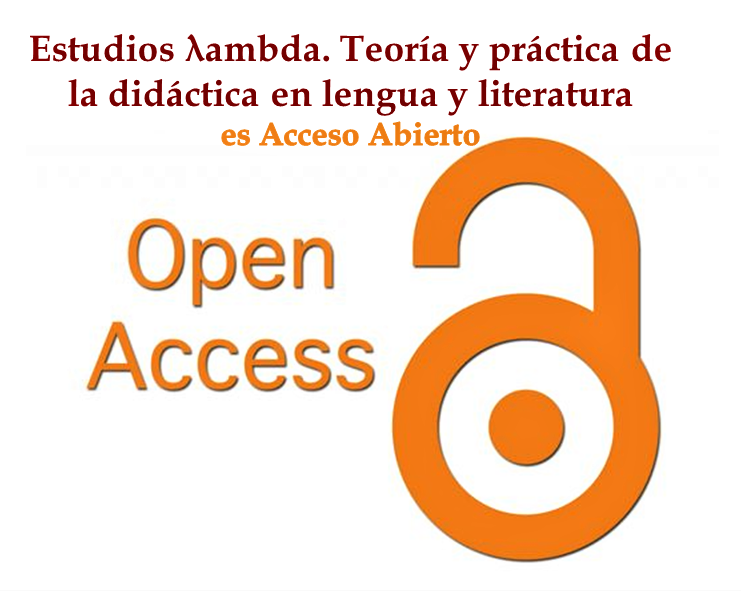Analysis and evaluation of a didactic strategy to take advantage of non-fiction picture books in Primary Education
Analysis and evaluation of a didactic strategy to take advantage of non-fiction picture books in Primary Education
DOI:
https://doi.org/10.36799/el.v8i1.129Keywords:
SpanishAbstract
This paper analyses and evaluates a didactic strategy devised to exploit non-fiction picture books. We start from the initial assumption that the organisation, design and style of many of these works turn learning into a vivid experience, as opposed to the more expository and cold approach of the textbook, provided that the mediation process takes advantage of the aesthetic and playful component they contain. To this end, we have developed an action-research process (Elliott, 1993) that analyses the results of a didactic intervention with a 3rd grade Primary school group, based on the book Find Tom in Time: Ancient Egypt, by Crow and Burke (2019), which we have already analysed in a previous work following the criteria of the Orbis Pictus Award Committee (Sanjuán and Cristóbal, 2022). The didactic procedure is based on the guided conversation model proposed by Tough (1976 and 1979) for the development of cognitive structures in children, on the consideration of the relevance of the emotional processes of reading and learning by Kesler (2012) and Sanjuán (2013), as well as on Bandura's (1976) concept of modelled social learning. The results indicate that the didactic strategy developed adds numerous emotional components to the cognitive processes of learning, stimulates attitudes of enquiry, creativity and play, and simultaneously favours sensory and linguistic development.
Downloads
References
Bandura, Albert. Teoría del Aprendizaje Social. Madrid: Espasa-Calpe, 1976 (trad. 1987).
Bonnafé, Marie. Los libros, eso es bueno para los bebés. México: Océano Travesía, 2008.
Butterfield, Carol L. Education by Imagination: Using Nonfiction Children's Literature to Promote Aesthetic Connections. Washington: Central Washington University. 2002. https://eric.ed.gov/?id=ED467522
Chambers, Aidan. Dime. Los niños, la literatura y la conversación. México: FCE, 1993 (trad. 2007).
Elliott, John. cambio educativo desde la investigación-acción. Madrid: Morata, 1993.
Garralón, Ana. Leer y saber. Los libros informativos para niños. Madrid: Tarambana Libros, 2013.
Gill, Sharon Ruth. What Teachers Need to Know About the "New Nonfiction". The Reading Teacher, 63 (4), 260-267, 2009, https://doi.org/10.1598/RT.63.4.1 DOI: https://doi.org/10.1598/RT.63.4.1
Govoni, Paola. Drawing Nature, Building Knowledge: Between Beauty and 'Gut Feelings' in the Sciences. En G. Grilli (ed.). Non-Fiction Picturebooks. Sharing Knowledge as an Aesthetic Experience, Edizioni ETS, 2020, 205-221. https://www.academia.edu/43795656/Drawing_ Nature_Building_Knowledge_ Between_Beauty_and_Gut_Feelings_in_the_Sciences
Hartsfield, Danielle E. “Not Just For Us Nerds”: Examining Elementary Teachers' Perspectives of Contemporary Children's Nonfiction. International Journal of Research in Education and Science, 7 (1), 2021, 1-26. https://doi.org/10.46328/ijres.1786 DOI: https://doi.org/10.46328/ijres.1786
Kesler, Ted. “Evoking the World of Poetic Nonfiction Picture Books”. Children's Literature in Education, 43 (4), 2012, 338-354. https://link.springer.com/article/10.1007/s10583-012-9173-4 DOI: https://doi.org/10.1007/s10583-012-9173-4
Kuhn, Karen E; Rausch, Casey M.; McCarthy, Tiffany G.; Montgomery, Sarah E., & Rule, Audrey C. Utilizing Nonfiction Texts to Enhance Reading Comprehension and Vocabulary in Primary Grades. Early Childhood Education Journal, 45(2), 2017, 285-296. https://doi.org/10.1007/s10643-015-0763-9 DOI: https://doi.org/10.1007/s10643-015-0763-9
Latorre, Antonio. La investigación-acción. Conocer y cambiar la práctica educativa. Barcelona: Graó, 2007.
Martínez, Raquel A. La investigación en la práctica educativa: Guía metodológica de investigación para el diagnóstico y evaluación en los centros docentes. Madrid: Centro de Investigación y Documentación Educativa (CIDE), 2007.
Martins, Marcus y Belmiro, Celia A. Stylistic strategies in children's nonfiction books. En Goga, Nina, Iversen, Sarah H. & Teigland, Anne S. (eds.). Verbal and visual strategies in nonfiction picturebooks: Theoretical and analytical approaches Oslo: Scandinavian University, 2021, 8-21. Press. https://doi.org/10.18261/9788215042459-2021-01 DOI: https://doi.org/10.18261/9788215042459-2021-02
Palmer, Rosemary G. y Stewart, Roger A. Models for using nonfiction in the primary grades. The Reading Teacher, 58(5), 2005, 426-434. https://doi.org/10.1598/RT.58.5.2 DOI: https://doi.org/10.1598/RT.58.5.2
Rosenblatt, Louise. La literatura como exploración. México: FCE, 2002
Sanjuán, Marta. La dimensión emocional en la educación literaria. Zaragoza: PUZ, 2013.
Sanjuán, Marta y Cristóbal, Rubén. “Procesos emocionales de la lectura y el aprendizaje en un libro ilustrado de no-ficción y en un libro de texto”. Publicaciones, 52(1), Granada, 2022, 57-99. DOI: https://doi.org/10.30827/publicaciones.v52i1.22294
Sanjuán, Marta; Manrique, Noemí y Tabernero, Rosa. “Instruir deleitando con libros ilustrados de no ficción en el aula de Educación Infantil”, en Asiáin, Alfredo y López, María Victoria (coords.), Multimodalidad y didáctica de las literaturas, 131-153. Barcelona: Graó, 2022.
Sánchez Miguel, Emilio (coord.) La lectura en el aula. Qué se hace, qué se debe hacer y qué se puede hacer. Barcelona: Graó, 2010.
Solé, Isabel. Estrategias de lectura. Barcelona: Graó, 1992.
Tabernero, Rosa. Formar lectores en la sociedad digital. Algunos retos y otros desafíos. En Asiáin, Alfredo y López, María Victoria (coords.), Multimodalidad y didáctica de las literaturas, 29-48. Barcelona: Graó, 2022
Tabernero-Sala, Rosa, Colón-Castillo, María J., Sampériz-Hernández, Marta & Campos-Bandrés, Iris. “Promoción de la lectura en la sociedad digital. El book-trailer del libro ilustrado de no ficción como epitextual virtual en la definición de un nuevo discurso”. Profesional de la información, Barcelona, 2022, 31(2), http://doi.org/10.3145/epi.2022.mar.13 DOI: https://doi.org/10.3145/epi.2022.mar.13
Tough, Joan. El lenguaje oral en la escuela. Una guía de observación y actuación para el maestro. Madrid: Visor/MEC, 1976 (trad. 1987).
Tough, Joan. Lenguaje, conversación y educación. El uso curricular del habla en la escuela desde los siete años. Madrid: Visor/MEC, 1979 (trad. 1989).
White, Lyn. The place of non fiction texts in today's primary school. Synergy, 9 (1), 2011, http://www.slav.vic.edu.au/index.php/Synergy/article/view/v9120119
Wolf, Maryanne. Lector, vuelve a casa. Cómo afecta a nuestro cerebro la lectura en pantallas. Bilbao: Deusto, 2020.
Young, Terrel A.; Moss, Barbara y Cornwell, Linda. “The Classroom Library: A Place for Nonfiction, Nonfiction in its Place”. Reading Horizons: A Journal of Literacy and Language Arts, 48 (1), 2007. https://scholarworks.wmich.edu/reading_horizons/vol48/iss1/3
Downloads
Published
Versions
- 2023-05-18 (2)
- 2023-03-06 (1)
How to Cite
Issue
Section
License
Copyright (c) 2023 RUBEN CRISTOBAL HORNILLOS

This work is licensed under a Creative Commons Attribution-NonCommercial-NoDerivatives 4.0 International License.
El autor o autores conservan en todo momento sus derechos morales y patrimoniales sobre la obra; la obra no se puede alterar, transformar o ampliar; siempre debe reconocerse la autoría del documento referido. Ninguna de las modalidades de los documentos publicados en Estudios λambda. Teoría y práctica de la didáctica en lengua y literatura tienen fines comerciales de naturaleza alguna.



